This article was co-authored by Kristin Pulaski and by wikiHow staff writer, Jessica Gibson. Kristin Pulaski is a Professional Nail Artist and the Founder of Paintbucket, a self-owned and operated nail salon based in Williamsburg, Brooklyn. She has over five years of experience running Paintbucket and is licensed as a nail technician. Paintbucket offers nail art manicures, pedicures, and soft gel extensions along with customized packages for wedding and bridal parties. She holds a BA in Managerial Science from Manhattan College.
There are 13 references cited in this article, which can be found at the bottom of the page.
This article has been viewed 50,371 times.
Nail art brushes are one of the most important tools of the nail trade. If you've ever reached for a brush and found a clump of dried product, you probably understand how important regular cleaning is. To keep your brushes in great condition, wipe your brushes frequently as you apply gel polish or acrylic pigment. Once you finish a set, clean all of the product out of the bristles so the brushes will be ready for nail art at a moment's notice!
Steps
Cleaning Detail Art Brushes
-
1Pour non-acetone polish remover into a small glass. Acetone does a great job of loosening and removing paint from brush bristles, but it is harsh and can dry out the bristles. Choose acetone for synthetic bristles or non-acetone nail polish remover for bristles made with natural fibers.[1]
- If you just cleaning a few brushes, pour about 2 tablespoons (30 ml) of the polish remover into a shot glass.
-
2Dip the detail brush bristles into the remover and swish it for 10 to 20 seconds. If you just finished painting nail designs with your detail brush, you'll see most of the paint come out within 10 seconds. If some of the paint has started to dry, swish the brush gently and keep it in the remover until you see that the paint is out of the bristles.[2]
- Since detail brushes are some of the most delicate brushes you probably work with, don't push down hard on the brush or you may bend the bristles.
Tip: If you have very fine liner brushes or you need to clean a detailing tool that doesn't have bristles (like a dotting tool), dip a cotton ball in the polish remover. Then, gently wipe the bristles or tool on the damp cotton ball until the polish is removed. Wipe in 1 direction so you don't damage the delicate bristles.
Advertisement -
3Blot the brush bristles on a paper towel or cotton pad. Lay a clean paper towel or cotton pad flat on your work surface and take lift the detail brush out of the polish remover. Dab the bristles on the towel so it absorbs the moisture.[3]
- Turn the brush as you dab the bristles so you get all of the polish remover out of them.
-
4Brush cuticle oil onto the bristles to condition them. Pour a few drops of cuticle oil into a dish and dab the bristles of your clean detailing brush in the oil. Turn the brush so all of the bristles are evenly coated. Then, dab the brush on a clean part of the paper towel to get rid of excess oil.[4]
- If the bristles aren't holding their shape, use your clean fingers to gently bring the bristles together.
Using Alcohol to Clean Gel Brushes
-
1Soak a cotton pad in isopropyl alcohol. Get out a package of lint-free cotton pads and set them at your workstation. Carefully pour just enough isopropyl alcohol on it to soak the pad completely. Then, lay it flat on your work surface.[5]
- 71% isopropyl alcohol, 99% isopropyl alcohol, and rubbing alcohol are all effective at cleaning gel polish from your brushes. Rubbing alcohol is essentially a mixture of isopropyl and ethyl alcohol diluted with water. Alcohol is the better option to clean nail art brushes without damaging them.
- Unlike acrylic brushes, gel brushes are made with synthetic bristles, so it's safe to use alcohol on them.
-
2Wipe both sides of the gel brush on the pad after painting a few nails. One of the best ways to prevent gel polish from gumming up your brush is to brush it on the alcohol-soaked pad after doing every couple of nails. Just wipe both sides of the brush onto the pad to remove the polish. Then, you can keep painting.[6]
- This also helps new gel polish spread onto the nail easier.
Tip: Wipe the brush in 1 direction before turning it to the other side. This is gentler on the bristles than if you firmly brush back and forth between both sides.
-
3Wipe the handle of the brush with a soaked pad to remove stickiness. Painting nails with a sticky brush can be really annoying. If you notice that the handle feels tacky, take a cotton pad soaked in isopropyl alcohol and wipe it on the handle until it feels smooth.[7]
-
4Swish the bristles in isopropyl alcohol to deep clean your brushes once a day. Once you've completely finished painting a set of gel nails, spend a minute thoroughly cleaning your brush. Pour about 1 inch (2.5 cm) of isopropyl alcohol into a small dish and dip the bristles into it. Swish your brush back and forth a few times and take it out. Then, press it gently against a dry cotton pad to remove the excess alcohol.[8]
- If you're applying glitter to the nails, you'll probably need to deep clean the bristles after you finish so you don't leave glitter in the brush.
- You don't need to buy brush cleanser for your gel brushes. If you read the ingredients on most of these products, they're actually made with isopropyl alcohol.
-
5Put the cap on each brush before you store it horizontally. The cap protects the bristles from getting bent, but if your brushes don't have caps don't worry! You can buy brush holders at most art or beauty supply stores. These might have horizontal dividers so you can push the brushes onto the holder and they won't roll away or rest on the bristles. If you have vertical brush storage, put the brush handles into the slots so the bristles are pointing straight up.[9]
- Laying the brushes horizontally or vertically doesn't put pressure on the bristles. Never store your brushes with the bristles pointed down since this will push them out of shape.
Caring for Your Acrylic Brushes
-
1Pour monomer into a small dish. You don't want to dip a dirty brush directly into your bottle of monomer, which can contaminate it, so pour a small amount into a clean dappen dish. If you prefer, keep a separate bottle of monomer just for cleaning your brushes. This way, you can swish the brush right in the bottle and save a little time.[10]
- Check your local beauty supply store for acrylic nail supplies like the monomer, pigment, and dappen dish. If you don't have the small, heavy dappen dish for dipping your brush, use any small glass dish like a shot glass.
- Monomer, the acrylic liquid that you mix with the pigment, is gentler on the brush bristles since it doesn't contain acetone, which is frequently included in brush cleansers.
-
2Saturate the bristles in monomer and wipe the brush on a cotton pad. Once you've finished creating a set of acrylic nails, dip your brush into the dish of monomer. Then, lay a dry cotton pad on your work surface and wipe the brush across it. Keep soaking the bristles with monomer and wiping until you don't see any traces of acrylic pigment on the pad.[11]
- To prevent the bristles from getting fuzzy, use a lint-free pad or paper towel.
-
3Dip the bristles in acetone briefly if acrylic has cured in the bristles. If you notice a clump of dried acrylic in the bristles of your brush, it's important to completely remove it or it will stick to acrylic that you're trying to apply. Swish the bristles into a small dish of acetone for about 5 seconds. Then, use gloved fingers or a cuticle stick to work the clump out of the bristles.[12]
Tip: Some nail stylists argue that acetone damages the natural bristles. As long as you don't leave the bristles in acetone too long or use acetone to clean the brushes frequently, your brushes should be fine. Just remember to condition the bristles with monomer once you finish.[13]
-
4Wipe the bristles on a lint-free cloth to shape them. Once your brush is loaded with monomer, lay a clean paper towel or cotton pad flat on your work surface. Then, wipe the bristles across the towel or pad so it absorbs excess moisture and the bristles return to their original shape.[14]
- Don't remove all of the monomer since it's conditioning the bristles.
-
5Put the cap on the brush before you store it to protect the bristles. If your brush came with a cap, place it over the bristles and set the brush down. If it doesn't have a cap, place your brush into a vertical brush holder so the bristles point down. This prevents monomer from soaking into the handle of the brush, which can damage it.[15]
- Buy vertical brush holders from beauty or art supply stores.
Things You'll Need
Cleaning Detail Art Brushes
- Small glass
- Acetone or non-acetone polish remover
- Detail nail art brushes
- Paper towel or cotton pads
- Cuticle oil
Using Alcohol to Clean Gel Brushes
- Lint-free cotton pads
- Isopropyl alcohol
- Gel brushes
- Small dish, optional
- Nail brush holder, optional
Caring for Your Acrylic Brushes
- Dappen dishes
- Monomer
- Brush cleanser
- Acrylic brushes
- Lint-free cotton pads
- Vertical brush holder, optional
References
- ↑ https://youtu.be/FwslGdbM6gk?t=28
- ↑ https://youtu.be/YxYb44fW41s?t=131
- ↑ https://youtu.be/FwslGdbM6gk?t=48
- ↑ https://youtu.be/FwslGdbM6gk?t=54
- ↑ https://youtu.be/t1rAx8Eu-hI?t=205
- ↑ https://www.nailsmag.com/384999/its-a-hard-knock-life-for-brush-picking-and-caring-for-nail-brushes
- ↑ https://youtu.be/t1rAx8Eu-hI?t=214
- ↑ https://www.nailsmag.com/384999/its-a-hard-knock-life-for-brush-picking-and-caring-for-nail-brushes
- ↑ https://www.nailpro.com/tips-cleaning-and-replacing-your-brushes/
- ↑ https://www.nailsmag.com/384999/its-a-hard-knock-life-for-brush-picking-and-caring-for-nail-brushes
- ↑ https://youtu.be/p9htT0xzlYo?t=410
- ↑ https://youtu.be/p9htT0xzlYo?t=305
- ↑ https://www.nailsmag.com/384999/its-a-hard-knock-life-for-brush-picking-and-caring-for-nail-brushes
- ↑ https://youtu.be/p9htT0xzlYo?t=958
- ↑ https://youtu.be/p9htT0xzlYo?t=594
- ↑ https://youtu.be/Vp8Q_7dNTSI?t=67
About This Article
To clean your detail nail art brushes when you're done using them, just swish the bristles around in nail polish remover for 10-20 seconds, then blot them on a paper towel or cotton pad. You can also dip the bristles in some cuticle oil to condition them. For gel nail art brushes, soak a cotton pad with rubbing alcohol, then wipe the bristles off on it. Wipe the handles of your brushes off with the soaked cotton pad. Store your brushes horizontally or at least with the bristles pointing up so you don't damage them! For tips on how to care for your nail art brushes, scroll down!
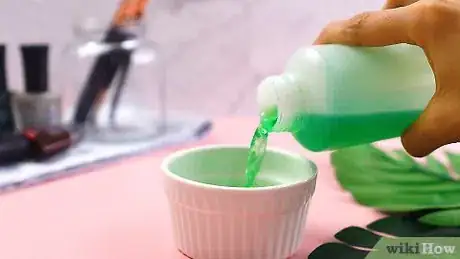
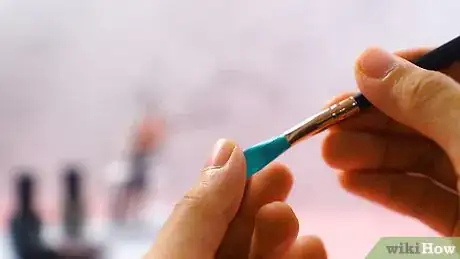
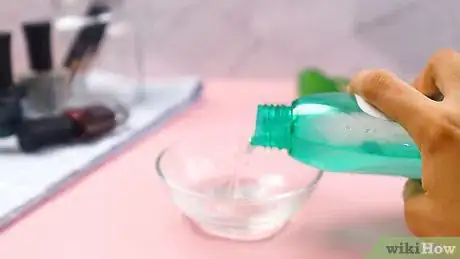
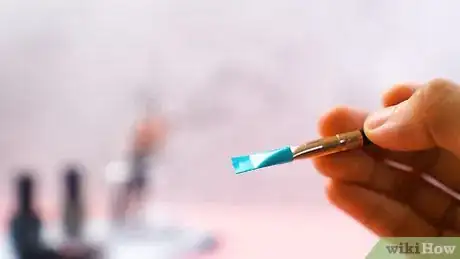

-Step-1.webp)




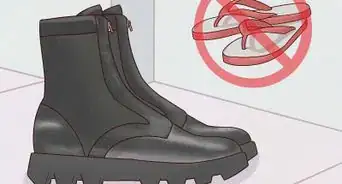


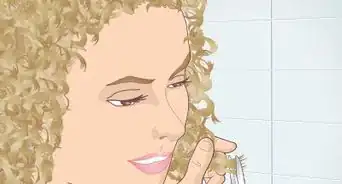
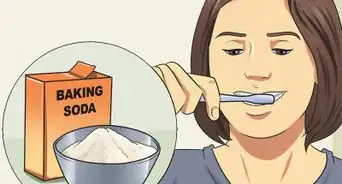

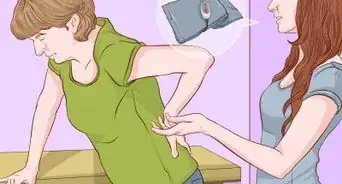







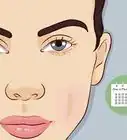
-Step-1.webp)




































